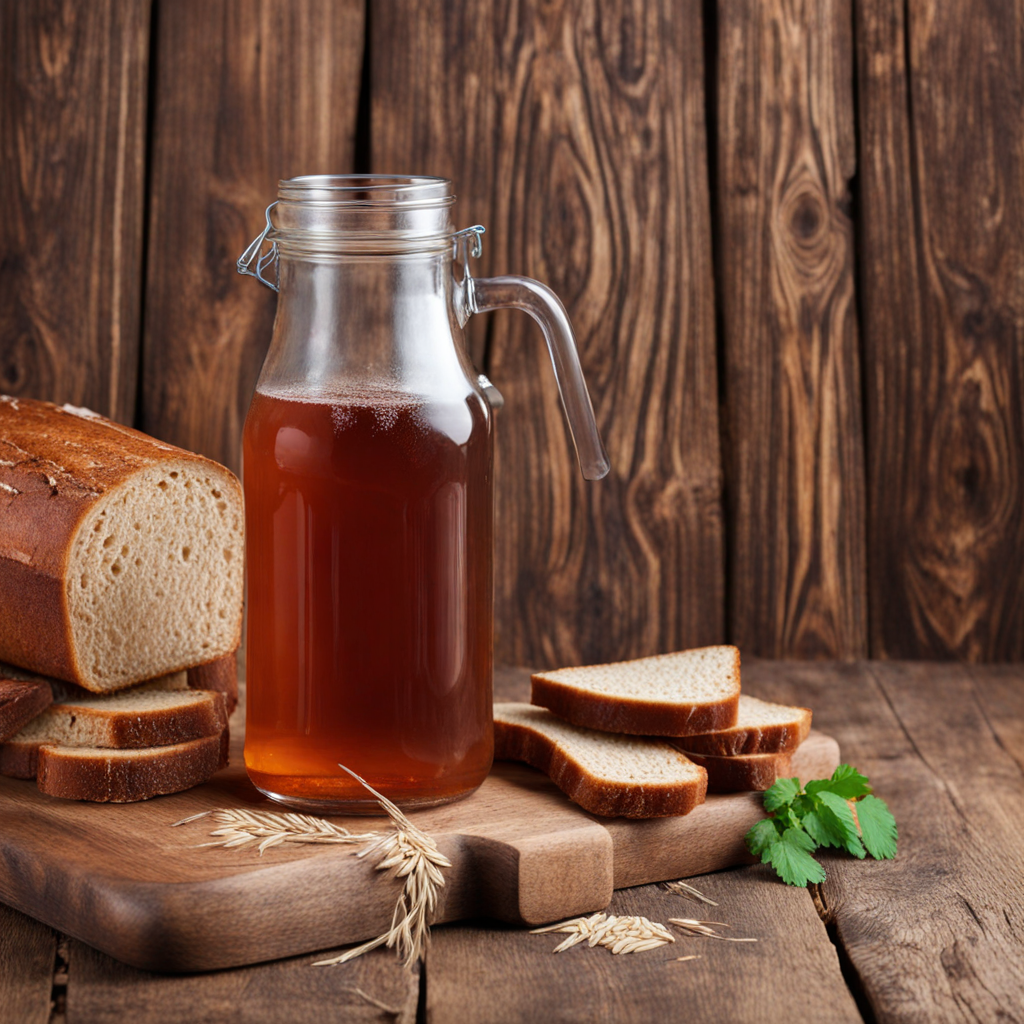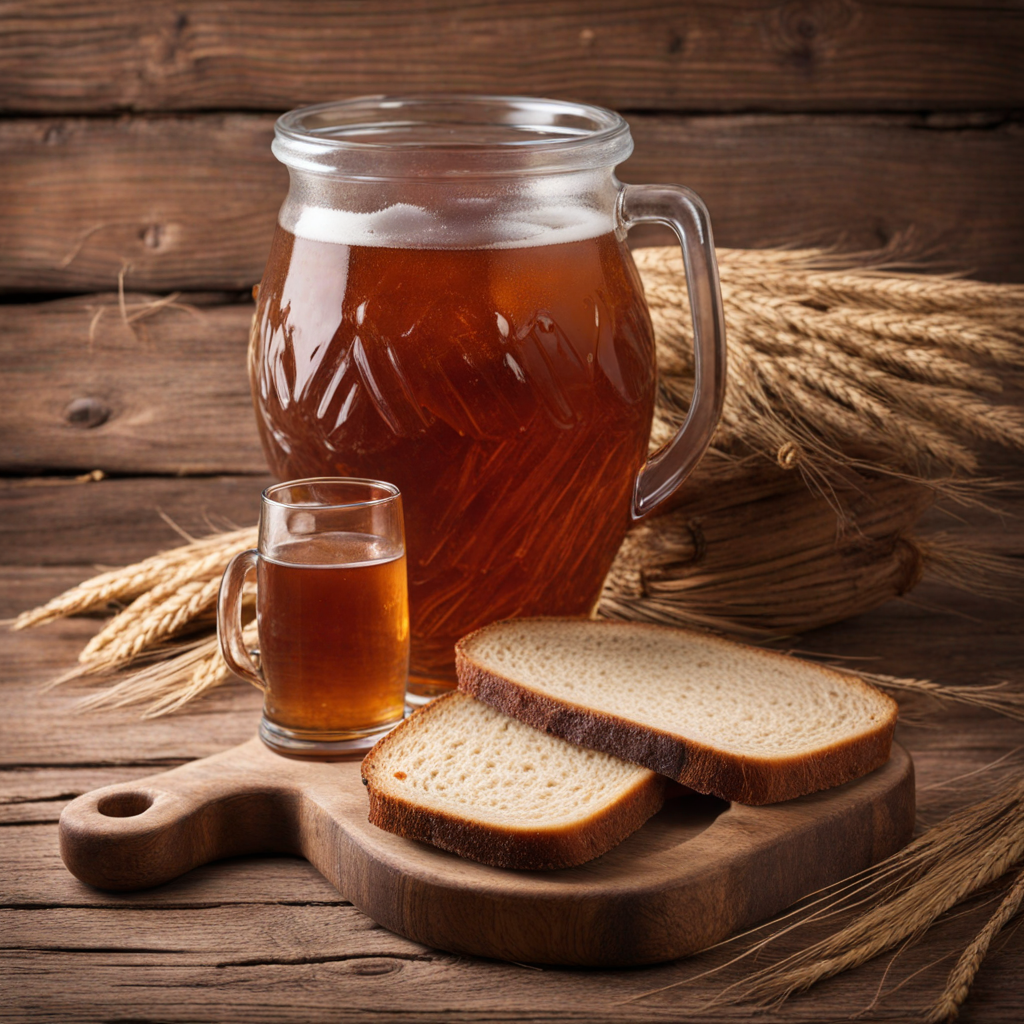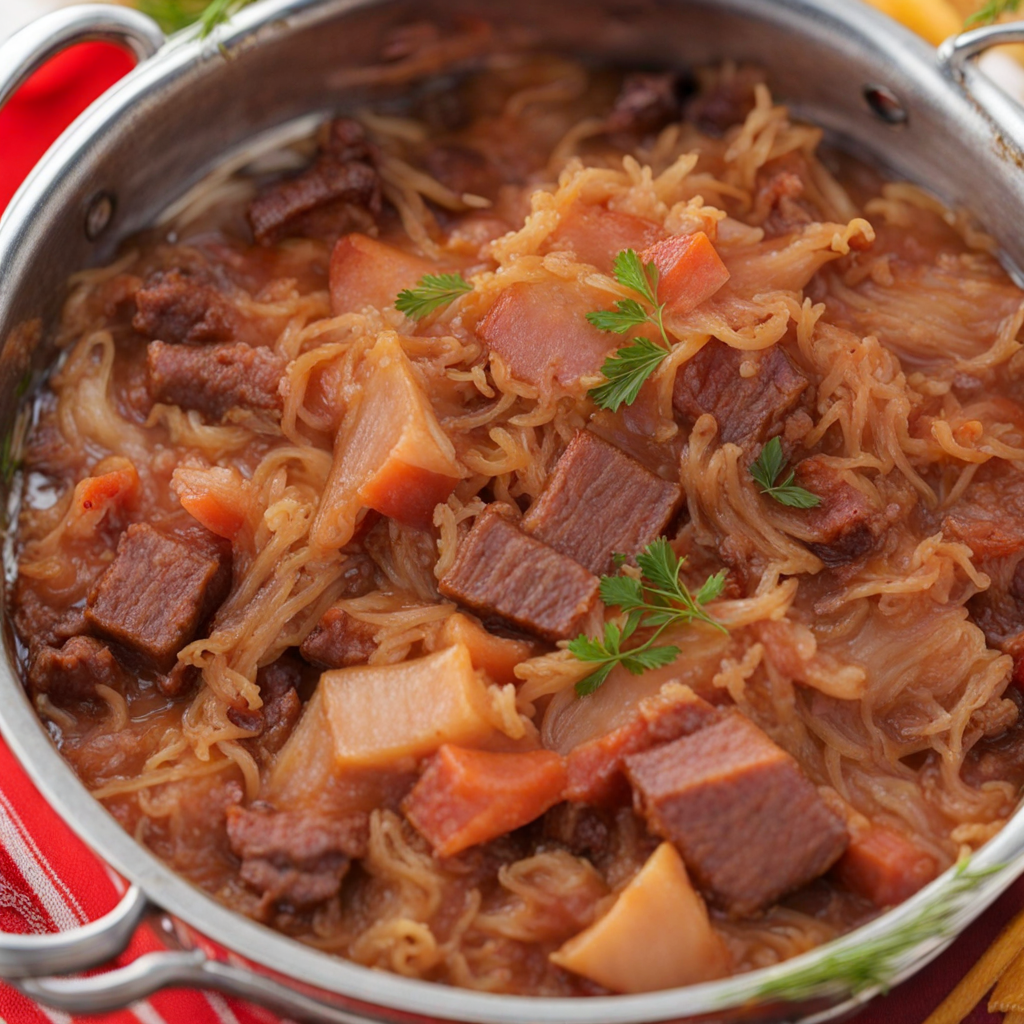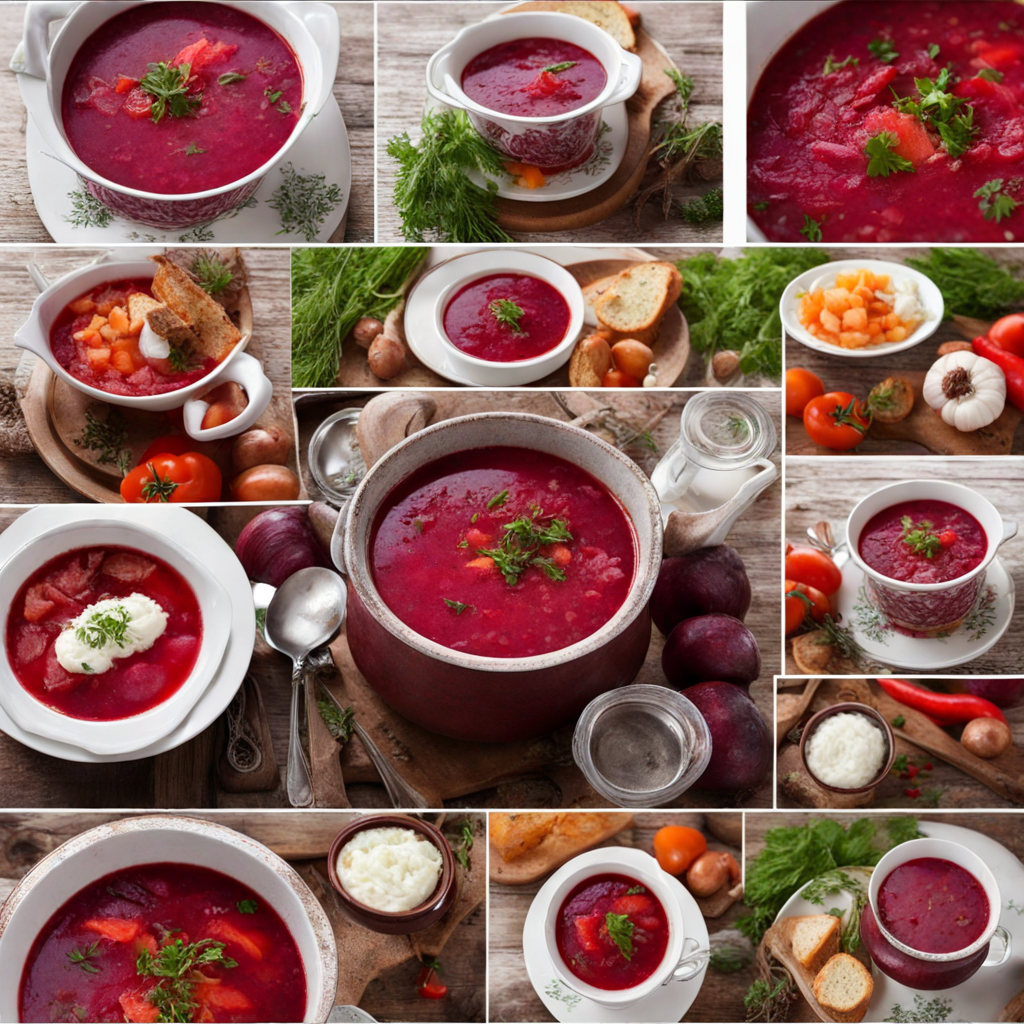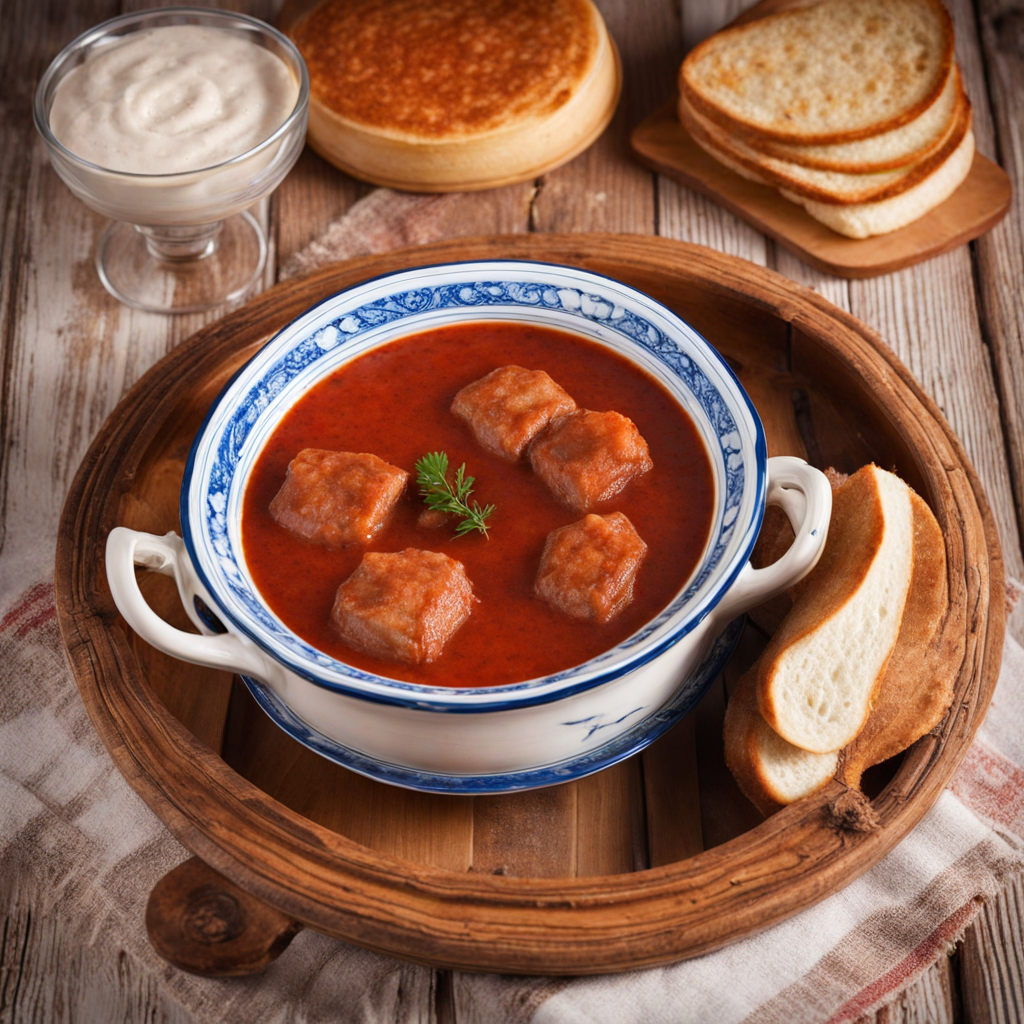Belarusian Kvass
Belarusian Kvass is a traditional fermented beverage that embodies the rich culinary heritage of Belarus. Made primarily from rye bread or barley, this refreshing drink has a unique flavor profile that combines subtle sweetness with a hint of sourness, resulting from the natural fermentation process. Kvass typically has a low alcohol content, usually around 1-2%, making it a popular choice for all ages. The deep amber color, often with a slightly cloudy appearance, hints at its rustic origins, while the aroma is a delightful blend of malt, bread, and a touch of earthiness, inviting you to take that first sip. As you taste Belarusian Kvass, you'll immediately notice the effervescence dancing on your palate, a result of the carbonation developed during fermentation. The initial sweetness from the malt is balanced by a tangy finish, reminiscent of sourdough bread. Some variations of Kvass may include additional flavors like fruits, herbs, or spices, enhancing its complexity and making each glass a unique experience. This versatility allows Kvass to pair well with a variety of dishes, from hearty stews to light salads, making it an excellent accompaniment to a traditional Belarusian meal. Kvass not only serves as a refreshing beverage but also holds cultural significance in Belarusian society. Often enjoyed during hot summer days or as a thirst-quencher during festivals, it embodies the spirit of community and hospitality. The process of making Kvass at home is a cherished tradition, with families passing down recipes through generations, allowing for personal touches and variations. For those seeking a new taste experience, Belarusian Kvass offers a delightful journey into the flavors of Eastern Europe, showcasing the simplicity and depth of its ingredients.
How It Became This Dish
The History of Квас: A Belarusian Beverage #### Origins and Early Development Квас (kvass), a traditional fermented beverage, has deep roots in Belarusian culture and history. Its origins can be traced back over a thousand years, with references to kvass appearing in ancient Slavic texts. The word "kvass" itself is derived from the Old Slavic word "kvasiti," meaning "to ferment." This reflects its fundamental nature as a fermented drink, primarily made from rye bread, water, and sugar, which is often enriched with various herbs and fruits. Kvass's earliest iterations were likely simple and rustic, emerging in a society that relied heavily on bread for sustenance. Ancient Slavic peoples would have found that leftover bread, when combined with water and allowed to ferment, produced a mildly alcoholic and refreshing drink. This early form of kvass was not only a source of hydration but also a means of preserving the nutrients found in stale bread, making it a practical choice for communities that faced scarcity. #### Cultural Significance In Belarus, kvass transcends mere refreshment; it has become a cultural symbol and a source of national pride. Traditionally consumed during summer months, kvass is often referred to as "the drink of the people." Its affordability and ease of preparation made it accessible to all classes, from peasants to nobility. This egalitarian aspect of kvass contributed to its role as a unifying beverage, bringing people together during communal gatherings, festivals, and family celebrations. Kvass is deeply woven into the fabric of Belarusian folklore and traditions. It is often featured in folk songs, poems, and tales, symbolizing hospitality and friendship. In rural areas, kvass was commonly brewed at home, with families passing down their unique recipes from generation to generation. This artisanal craft not only fostered a sense of community but also highlighted the importance of local ingredients and techniques in Belarusian cuisine. #### Ingredients and Variations The standard recipe for kvass involves the fermentation of rye bread, sugar, and water, but its versatility has led to numerous regional variations. In Belarus, additional ingredients such as mint, berries, or honey are often added to enhance the flavor profile. Depending on the season and local customs, kvass can be made with fruits like apples, cherries, or even herbs like coriander, resulting in a spectrum of flavors. The fermentation process is crucial to kvass's character. Typically, the mixture is allowed to ferment for a few days, during which wild yeast and lactic acid bacteria convert sugars into alcohol and acids, creating a slightly tangy and effervescent drink. The final product is typically low in alcohol content, usually around 1-2%, making it suitable for all ages and occasions. #### Development Over Time As Belarusian society evolved, so did the production and consumption of kvass. During the 19th century, with the rise of urbanization and industrialization, the beverage began to transition from a homemade staple to a commercially produced item. Factories started to emerge, and kvass production became more standardized, allowing for mass distribution. This shift, however, threatened the traditional methods that had defined kvass for generations. Despite modernization, kvass retained its popularity. The introduction of carbonated versions and flavored varieties appealed to a broader audience, particularly in urban areas. By the late 20th century, kvass had established itself as a staple beverage in the former Soviet Union, with numerous brands competing for market share. This commercialization brought kvass into the global arena, where it began to attract attention beyond its regional borders. In contemporary Belarus, kvass is experiencing a renaissance, as consumers seek to reconnect with traditional foods and beverages. The growing interest in craft brewing and local production has led to a resurgence of artisanal kvass makers, who emphasize quality, local ingredients, and traditional fermentation methods. These small-scale producers often experiment with innovative recipes, incorporating local fruits, herbs, and spices to create unique flavors that honor the beverage's rich history while appealing to modern palates. #### Modern Context and Global Reach Today, kvass stands as a testament to Belarus's culinary heritage. It is commonly found at local markets, festivals, and restaurants, where it is served chilled, often with a slice of lemon or a sprig of mint. The drink has also gained popularity among health-conscious consumers, who appreciate its probiotic properties and natural ingredients. Moreover, kvass is not only enjoyed in Belarus. Its appeal has spread to neighboring countries, such as Russia and Ukraine, where similar versions of the beverage exist. In recent years, kvass has started to find its way into international markets, particularly in Eastern European communities in the West. This expanding presence reflects a broader trend of rediscovering traditional foods and beverages as consumers seek authentic experiences in their culinary adventures. #### Conclusion The journey of kvass from its humble beginnings as a simple fermented drink to a cultural icon of Belarus is a story of resilience and adaptability. This beloved beverage has managed to maintain its significance through centuries of change, serving as a symbol of national identity and communal ties. As Belarus continues to evolve, kvass remains a cherished part of its culinary landscape, bridging the past with the present and inviting new generations to partake in its rich history. Whether enjoyed at a summer picnic, a family gathering, or a festive celebration, kvass is more than just a drink—it is a living testament to the spirit of Belarusian culture and heritage.
You may like
Discover local flavors from Belarus


